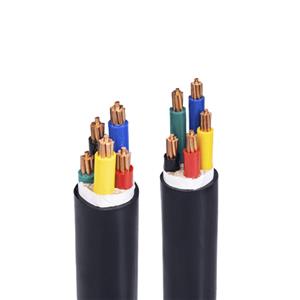What is the difference between aluminum alloy cable and aluminum core cable?
In today's cable market, aluminum alloy cables and aluminum core cables are widely used. Both types of cables play an important role in power transmission, whether in the industrial or civil fields. However, there are some significant differences between them, and understanding these differences is crucial to choosing the correct cable. Aluminum alloy cable is a new material power cable invented and created using AA8030 series aluminum alloy material as conductor and using special compression process and annealing treatment. Aluminum core cables are aluminum conductor cables made of aluminum, and their code names are represented by the letter "L" for aluminum. Due to the differences in materials and manufacturing processes between the two, there are also many differences in performance. Let us analyze it from four aspects: corrosion resistance, mechanical properties, electrical conductivity, and creep resistance.

1. Corrosion resistance: pure aluminum has better corrosion resistance than copper, but aluminum alloy has better corrosion resistance than pure aluminum, because the rare earth and other chemical elements added to aluminum alloy can increase the corrosion resistance of aluminum alloy, especially the electrochemical corrosion resistance, which solves the problem of electrochemical corrosion of pure aluminum at the joints for a long time.
2. Mechanical properties: tensile strength and elongation: compared with pure aluminum conductors, aluminum alloy conductors have greatly improved tensile strength and elongation to 30% due to the addition of special ingredients and the use of special processing technology, making them safer and more reliable to use. Bending performance: aluminum core cables have poor bending performance and are prone to breakage. The bending radius of aluminum alloy power cables is 7 times the outer diameter of the cable, which is far better than the 10-20 times the outer diameter of the cable specified in the "minimum bending radius during cable installation" of GB/T 12706-2020. Flexibility: If pure aluminum cables are twisted at a certain angle several times, the conductor will crack or break, which can easily cause accidents. Aluminum alloy power cables can withstand dozens of bends, eliminating the hidden dangers of accidents during the installation and use of pure aluminum cables in the past, greatly improving safety and reliability.
3. Conductivity: Aluminum alloy conductors are emerging conductor materials formed by adding rare earth, magnesium, copper, iron and other elements to pure aluminum through alloying processes. As we all know, after adding a variety of other alloy elements to aluminum, the conductivity will decrease, but through process control, the conductivity can be restored to a level close to that of pure aluminum, making it have a similar current carrying capacity to pure aluminum.
4. Creep resistance: Pure aluminum has poor creep resistance. The thermal expansion and contraction caused by power on and off will cause a large creep amount at the connection. After a long time, relaxation will occur, which will increase the contact resistance and cause overheating, causing safety accidents.

Aluminum alloy cables and aluminum core cables have obvious differences in many aspects, and each has its own advantages. Users should consider the actual needs when choosing. In short, when choosing the type of cable, users should comprehensively consider factors such as the actual application scenario, performance requirements, and cost budget. If you have high requirements for corrosion resistance, mechanical properties, and creep resistance, and the budget is relatively sufficient, you can choose aluminum alloy cables; if you are more sensitive to cost and have less stringent performance requirements, aluminum core cables are a more economical choice.




